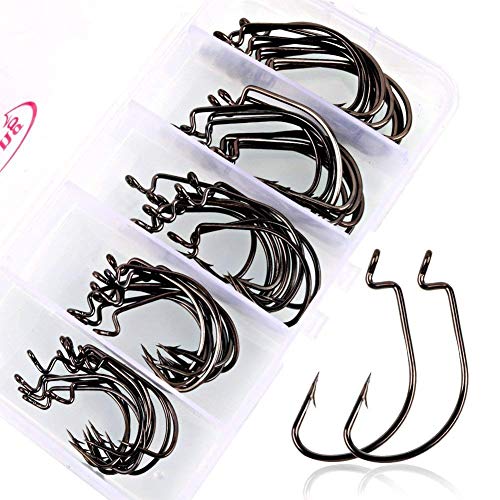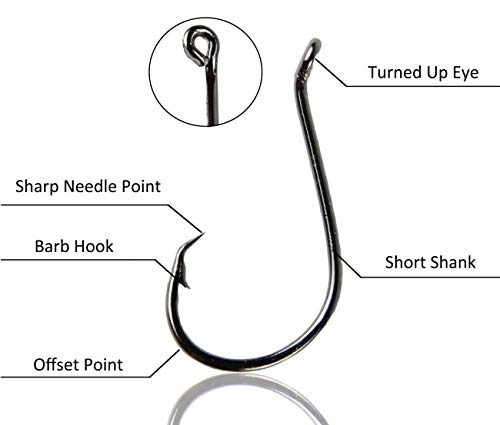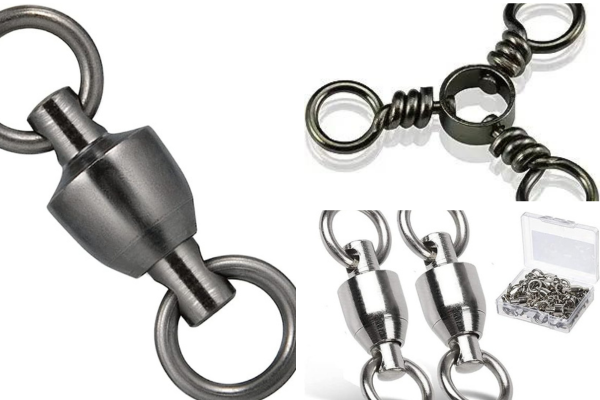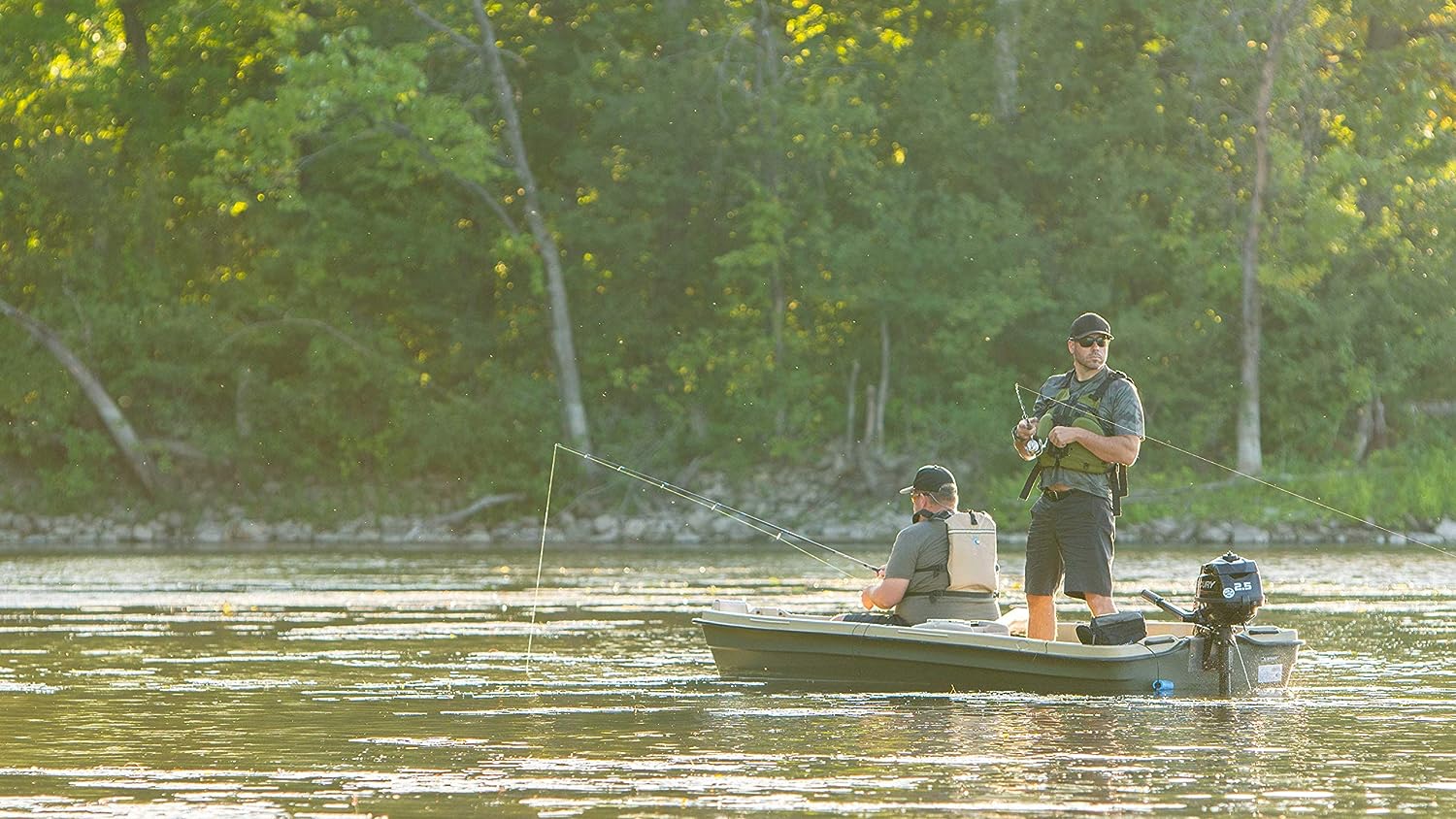Walked into a tackle stall lately and couldn’t decide what fishing hook to buy? Or are you new to angling and looking to start most conveniently?
Either way, we have compiled a guide for you on how to choose a fishing hook. With our tips, be rest assured that you won’t go home without a catch on your next angling trip.
For specifics, we will help you narrow down the type of fishing hook that best meets your needs. We will also discuss when to choose a barb-styled hook. Ultimately, we will explain how the size, strength, and sharpness of hooks contribute to successful fishing.
That said, let’s get started!
5 Factors To Note When Choosing A Fishing Hook
What Type Of Hook Do You Need?
The first and most vital step to getting the best hook is circling on which type to pick. In the end, your choice determines the success of your fishing trips. As such, prepare to consider a lot here.
So, what type will you choose? A J-hook, circle hook, or treble hook?
Let’s help you!
J-hooks

J-hooks are arguably the most popular types of hook. They have sharp points, round bends, and long shank – where you can insert threading lines. More importantly, these j-shaped aids fit several kinds of fishes and fishing methods.
With these j-shaped hooks, your fishing environment doesn’t matter, nor does the lure or even the rigs. J-hooks work well in freshwater and saltwater, with lures of varied sizes and all types of basic rigs.
Another thing with J-hooks is the assurance of a catch as long as the fish takes your bait. For that reason, they are your safe bet if you want constant haul from your trips.
However, J-hooks can be difficult for beginners. In some situations, your catch will even swallow the hook. So, you might want to first improve your hook removal skills before using these types.
Circle Hooks

Circle hooks are just as popular as J-hooks, and they both look a bit alike. Here, you will also find a long shank, but the bend is rounder and extends even further than J-hooks – hence the name.
Funnily enough, circle hooks by their looks don’t seem the right fit to catch fishes. They seem rather odd, but you’d be surprised how efficient these aids can be, especially when you want an easy grab-and-release. How so?
Unlike J-hooks, circle hooks are specific on how they grab your catch. With the latter, you will hook a fish through the corner of its mouth or lips. Thanks to that, you don’t have to be a pro to remove your catch.
However, the specific point of hooking comes at a price. With circle hooks, it is best you use real fishing baits. In other words, a makeshift or your maneuvers won’t work.
Another short gap of circle hooks is that they are not fit for lure fishing. Furthermore, be careful not to use a large bait that covers the setup. Else, you won’t get a catch.
Regardless, circle hooks are the best fit for large game fishing and if you’re an angler who doesn’t want to hurt his catch. But you should also know there’s less assurance of getting a fish here, unlike J-hooks.
Treble Hooks
Perhaps you have used J-hooks and even circle hooks, but with no success. It is time to try something more – a treble hook.
This type of hook comes with three points extending from a single shank – hence the name. Treble hooks are efficient aids for fishes that would rather bite the tails of your bait instead of eating it whole.
Smart fishes, eh? Treble hooks will limit your loss!
However, note that treble hooks might not be perfect fits for all kinds of fishing. The reason for that is because they might injure your catch. Plus, the aids can be difficult to remove.
Should You Use A Barbed Hook?
If you don’t know what a barb is, look at your hook, and you will see a tiny splinter of metal around the trap points. That’s a barb!
Thanks to that splinter of metal, your hook stays in your catch’s mouth, regardless of how it struggles to get out. Unfortunately, some local rules go against the use. Why?
Barbs tend to injure fishes. They are often hectic to remove and can make you further damage a catch, especially when you have to return it, in the case of a young fish.
So, what can you do?
Go for barbless hooks, or you could crush the barbs on your hook with a plier. But know that you must now use more pressure while angling. Else, the fish will slip away from your grip.
What Hook Size Is Best For Fishing?
Short answer: none! Instead, consider your game and decide which hook size best fits your needs.
That said, here’s a little guide to help you:
- Hook starts at size 1/0 (also known as 32) and can go up to 28/0.
- Size 1/0 is mostly for freshwater fishing.
- Use any size above 1/0 for large fishes, especially the saltwater species.
- Sizes vary from a manufacturer to another. So, take your time to browse through the store.
- You might have to do a few trials and errors at the start until you find the right fit.
How Strong Is Your Hook?
Outside the type and size of your hook, or barb, you should also consider its strength. You don’t want an aid so brittle that it breaks when fishes bite on it.
You might think the strength of the hook doesn’t matter when fishing small catches. Well, you are right. But know that large fishes like pike, and the saltwater kinds, require hooks with matching strength.
So, what should you do?
Look out for indicators of strong hooks such as Extra, HD, XX, and XXX. Better put, ask the store manager or contact the manufacturer for assistance.
How Sharp Is Your Hook?
While strength is not crucial, your hook must be sharp. Note that mild sharpness won’t suffice; instead, target laser-sharp hooks.
About sharpness, you can try using a hook per session. That way, you can always file the used for the next trip.
Conclusion
We believe you now know how to choose a fishing hook. But as an extra tip, always choose based on your techniques, the target fish, and the type of water.
Happy fishing!
Share the Love
If you found this post useful, please let others know about it by sharing it.
Related Posts
If you found this post useful, please explore others posts.


